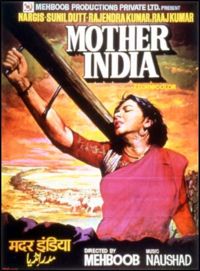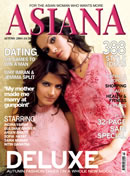Essay plan
Tittle - " 'Page 3' should be seen by all because of the important issues it raises and its ruthless insights into the world of socialites"
Introduction - Introduce with the basic, When Bollywood started? The assumption that it is a form of 'escapism'. Even from texts like Mother Indian discussed contemporary issues along with the traditional Hindu Myths. Now Bollywood films have changed films like PAGE 3 along with Rang De Basanti, Black and Fanaa all talk about issues that are in the collective conscious. Instead of 'escapism' it has actually developed to 'actuality' and 'realism'. Has a Diachronic and Diegesis narrative
Paragraph 1
Introduce 'Page 3' as my main text. Talk about the genre. is it common amongst Bollywood conventions? conform or rebels? Alot to talk about in society e.g. terrorism, politics and media. hybridity?
Paragraph 2
Target audience? western audiences having a impact of the films made.
Whats this suggesting about indian audiences if they dont like page 3 in comparison to western audiences? Link to institution, how this had an imact? prefer to escape? lack knowlegde of important issues or are they evolving as a country and wanting to see more realistic films.
Then again how accurate is Page 3 in reflecting society?
Paragraph 3
First piont of Bollywood (inparticular inreference to page 3) has evolved now talking about important issues in the media rather than the typical 'boy meets girl' narrative. Challenges conventions. The fact that the media is also shown to be corrupt showing the bad sides of Indian (and western) institutions.
E.g currption of the higher ranks . The main protagonist tries to do her job and print stories of celebrities but because of those in power and with money as unable to print the truth to the public.
Paragraph 4
Similarly in Rang De Basanti, also talks about corruption (Elite) of those in higher positions. Introduce the film and its genre. (Links to Page 3)Sue, a young London-based filmmaker chances upon the diaries of her grandfather, who served in the British police force in India during the freedom struggle. She comes to India to shoot a film on the Indian revolutionaries mentioned in the diaries. men are the ones in power as a steroptype these films conform to patriachy.
Paragragh 5
Bollywood is effectively changing. Targetting a wider audience with its hybridity. Therefore society must be changing, or is Bollywood simply just catering for the Western audiences? Issues like the Gay and lesbian factors which are shown in Page 3 are issues that Asian frown upon (queer theory). It is widely noted that since the 1980s there has been an increasing display and sexualisation of the male body in mainstream cinema and television and in advertising (Moore 1987, Evans & Gamman 1995, Mort 1996, Edwards 1997).
They have a conservative stance. Different ideologies and upbringing. Page 3 is representing issues that Asians feel they cant talk about. change in society?
Paragraph 6
Bollywood is not changing. (arguing against) the main protagonist Madhavi we see the narrative through her eyes (camera techniques POV shot)- forced to feel her emotions.. Despite your race of cultural background we can all somehow relate to the story. Goes against laura muvleys theory that the audience are males.. infact the males are forced to watch this film through the eyes of a women. She doesnt fulfil the qualities of being 'looked-at-ness' shows alot of discrimination, sexism things that women face everyday. Should women be at home? rather than working? all the higher ranks in the film are men. women conform to stereotypes as the women shown are into fashion and gossiping. Realims? (no). Promoting a multi cultural society
Paragraph 7
In contrast in Fanaa (after her husband leaves her) she is shown to be strong and fully capable of bringing out her son without a father. Introduce this film. Fanaa. briefly explain what its about. Terrorism. realism? yes.. the fued between the pakistani, kashmir and indians fighting over land is mirrored in Fanaa. similary in Page 3 a scene where there was a bombing. Both films emphasize the fact that terrorism is contemporary its sometthing we all need to be aware of.
Paragraph 8
" I feel that Bollywood films were honest and dealt with real issues " -said by a women called heidi who was in the series of Bollywood ideal. which was published in a popular Asian magazine : ASIANA. Films like 'Black' who represent those with special needs. in this case a blind women who is being taught the basics to communicate. People with disablities would of normally been look down on society would have thought the person was possessed by a devil. Now people know its more than that. feel sympathyy. media makes the audience more aware and teaches them rather than escape. (e.g lagaan set back in the 1900 the cripled man was looked down on.)
Paragraph 9
Throughout the film, there are obvious western influences.Cultural Imperialism: In typical Bollywood films there would be songs and dances in page 3 there isn't. another film that doesnt have songs is Black. Always links back to reality - the recurring image is the theme of celebrations. After each issue the audience is drawn back to a party. Ignorant people? avioding these important issues just to have parties. Here the parties include a variety of different people and culture amplifying the idea that it is common all over the world.
Paragraph 10
Capitalism - to get somewherre and to be someone you need to have money, contacts and status. Cultural Industry:India is known for the government and police being corrupt and this is one of a few films who explicitly show this along with Rang De Basanti. in one scene the a character was arrested being caught in the act of peadophillia and soon being released becuase his father is a well respected and higher status man.
Paragraph 11
Asian culture is now seen as a stylish and is influencing area's in fashion, music food and entertainment. After Lagaan winning oscars, Bollywood began to become well known in the western culture. This could of triggered its change. It aims in portraying modern Asian life tackling real issues that the British audience can relate to. Ironically in todays society India has now become a source of inspiration for spirituality, music and fashion. This reflects how much attitdues have changed in the west to asian culture. "mainstream isno longer synonymous and white. "
Conclusion:In conclusion Page 3 contains a variety of contemporary issues represented by Asian. These stereotypes of asian are being challenged however indirectly most are conforming. influences from western culture has in fact introduced a new genre to Bollywood. social realism


